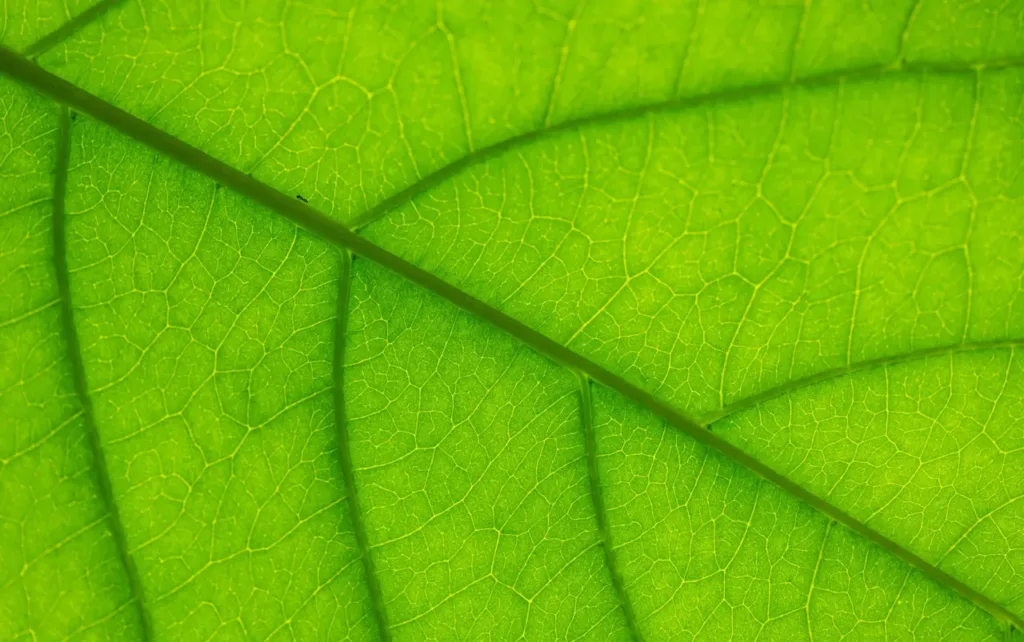Chlorophyll is a green pigment which is most closely associated with energy absorption in plants. A pigment is a molecule that has a particular color and can absorb light at different wavelengths, depending on the color. There are many different types of pigments in nature, but chlorophyll is unique in its ability to enable plants to absorb the energy they need to build tissues. Chlorophyll is located in a plant’s chloroplasts, which are tiny structures in a plant’s cells. This is where photosynthesis takes place. Phytoplankton, the microscopic floating plants that form the basis of the entire marine food web, contain chlorophyll, which is why high phytoplankton concentrations can make water look green.

Chlorophyll’s job in a plant is to absorb light—usually sunlight. The energy absorbed from light is transferred to two kinds of energy-storing molecules. Through photosynthesis, the plant uses the stored energy to convert carbon dioxide (absorbed from the air) and water into glucose, a type of sugar. Plants use glucose together with nutrients taken from the soil to make new leaves and other plant parts. The process of photosynthesis produces oxygen, which is released by the plant into the air.
Chlorophyll gives plants their green color because it absorbs blue and red light in preference to green which is reflected, causing the plant to appear green. Chlorophyll will bring red or blue photons in preference to green photons, however, if green photons are considerably closer the chlorophyll will bind the green photons. Red photons being those most highly available and used inside the chlorophyll. It’s important to remember that plant process and chemical reactions are dramatic and molecules are constantly in motion.

There are two types of chlorophyll, type A and type B. The primary pigment of photosynthesis is chlorophyll A. Chlorophyll B is an accessory pigment because it is not necessary for photosynthesis to occur. All organisms that perform photosynthesis have chlorophyll A, but not all organisms contain chlorophyll B. Chlorophyll A absorbs light from the orange-red and violet-blue areas of the electromagnetic spectrum. Chlorophyll A transfers energy to the reaction center and donates two excited electrons to the electron transport chain.The central role of chlorophyll A is as a primary electron donor in the electron transport chain. From there on, the energy from the sun will ultimately become chemical energy that can be used by the organism for cellular processes. One of the main distinctions between Chlorophyll A and B is in the color of the light that they absorb. Chlorophyll B absorbs blue light. Chlorophyll B’s central role is to expand the absorption spectrum of organisms.That way, organisms can absorb more energy from the higher frequency blue light part of the spectrum. The presence of chlorophyll B in cells helps organisms convert a wider range of the energy from the sun into chemical energy.Having more chlorophyll B in chloroplasts of cells is adaptive. Plants that receive less sunlight have more chlorophyll B in their chloroplasts. An increase in chlorophyll B is an adaptation to the shade, as it allows the plant to absorb a broader range of wavelengths of light. Chlorophyll B transfers the extra energy it absorbs to chlorophyll A.
Plants that use photosynthesis to make their own food are called autotrophs. Animals that eat plants or other animals are called heterotrophs. Because food webs in every type of ecosystem, from terrestrial to marine, begin with photosynthesis, chlorophyll can be considered a foundation for all life on Earth.
